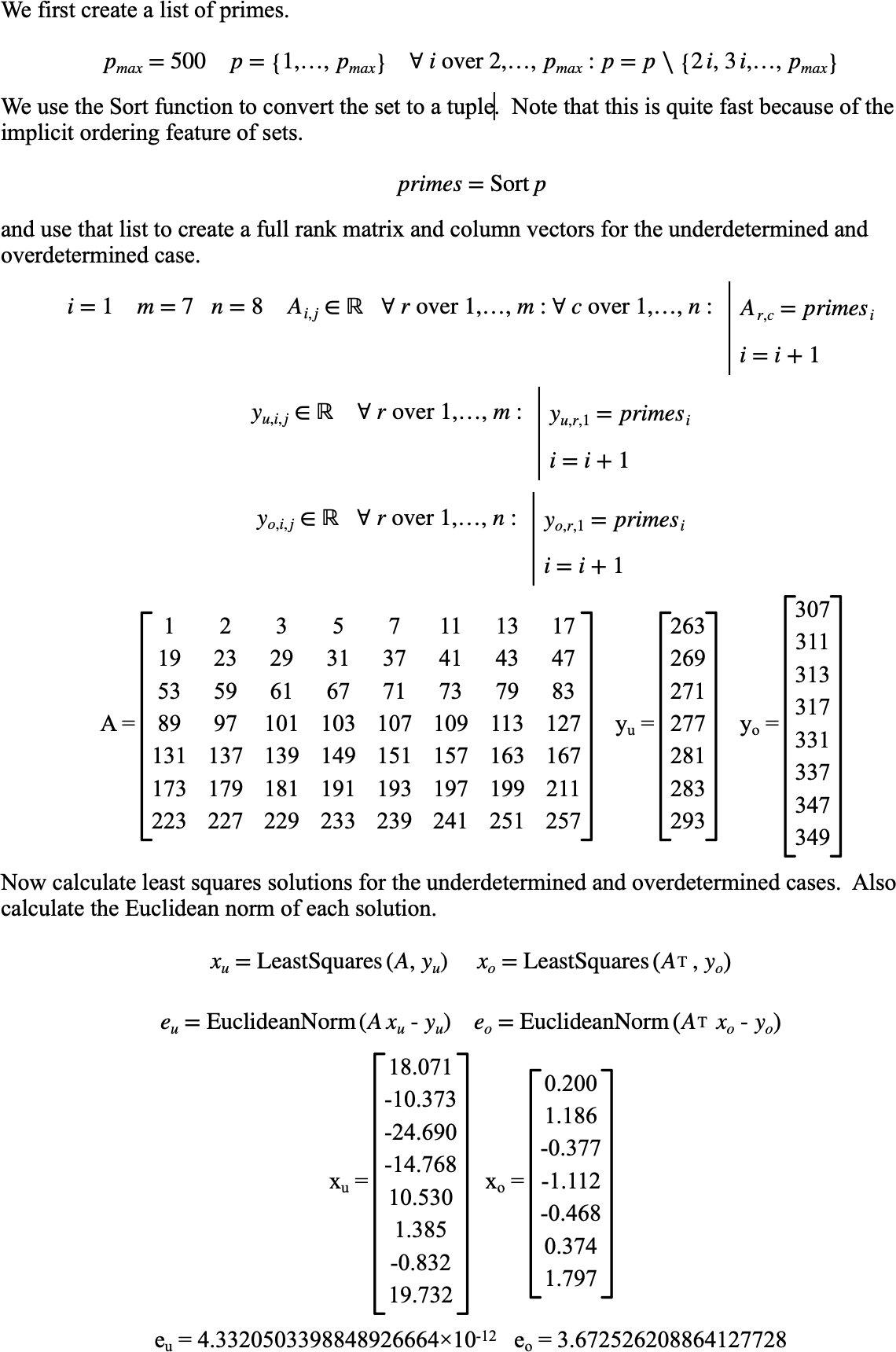\(\text{LeastSquares}\)¶
You can use the \(\text{LeastSquares}\) function to calculate the least squares error solution to \(A x = y\).
You can use the \leastsq backslash command to insert this function.
The following variants of this function are available:
\(\text{real matrix } \text{LeastSquares} \left ( \text{<A>}, \text{<y>} \right )\)
The \(A\) parameter represents a full rank matrix to use to calculate the solution. The \(y\) parameter represents the solution to \(A x = y\) that is to be used to calculate \(x\). This function will find the matrix, \(x\) that minimizes the value of
Equivalently, find the column matrix \(x\) that minimizes \(\left \Vert A x - y \right \Vert _ 2\) where \(\left \Vert x \right \Vert _ 2\) represents the Euclidean norm of \(x\).
When \(A\) is an m-by-n matrix with \(m \geq n\), we have an overdetermined system of simultaneous equations. In this scenario, the solution is found using QR factorization of matrix \(A\).
When \(m < n\), we have an underdetermined system with an infinite number of possible solutions that satisfy \(A x = y\). In this scenario, the \(\text{LeastSquares}\) function uses LQ factorization to find the solution that minimizes \(\left \Vert A x - y \right \Vert _ 2\).
Figure 167 shows the basic use of the \(\text{LeastSquares}\) function.

Figure 167 Example Use Of The LeastSquares Function¶
